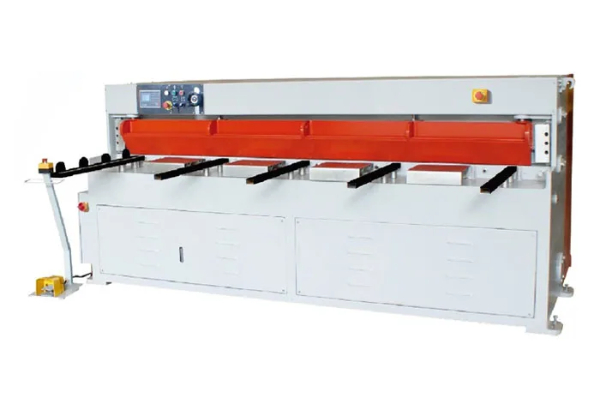
Bending Business- Choosing the Right Sheet Metal Press Brake for Your Needs
- By:Metmac
- 2024-04-28
- 157
In the realm of metal fabrication, sheet metal press brakes reign supreme as indispensable tools for transforming flat sheets of metal into intricate and functional forms. Choosing the right press brake for your specific needs is paramount, as it directly impacts the quality, efficiency, and cost-effectiveness of your operations. This comprehensive guide will delve into the crucial factors you must consider when embarking on this important decision.
Types of Press Brakes
Mechanical Press Brakes: Utilizing a flywheel and clutch mechanism, mechanical press brakes offer exceptional speed and precision for high-volume production.
Hydraulic Press Brakes: Renowned for their versatility and power, hydraulic press brakes provide precise control over bending force and stroke length.
Hybrid Press Brakes: Blending the advantages of mechanical and hydraulic systems, hybrid press brakes deliver speed, accuracy, and energy efficiency.
Size and Capacity
Tonnage: Measured in tons, tonnage refers to the bending force exerted by the press brake. Determine the thickness and material type of the sheets you will need to bend to accurately gauge the required tonnage.
Bending Length: The bending length defines the maximum length of the sheet that the press brake can bend. Consider the largest sheets you will typically work with.
Stroke Length: This measurement indicates the maximum depth to which the press brake can bend the metal. Factor in the complexity of your bends when considering stroke length.
Controls and Automation
Manual Controls: Simple and intuitive, manual controls provide direct operator control over the press brake’s functions.
CNC Controls: Computerized numerical control (CNC) systems offer advanced automation, programming, and precision bending capabilities.
Robotic Automation: For high-volume operations and complex bending sequences, robotic automation can significantly increase efficiency and reduce labor costs.
Features and Options
Crowning: This feature ensures that the bent sheet remains flat by compensating for the natural deflection of the press brake bed.
Quick Tool Change: Time-saving quick tool changes facilitate rapid transitions between different bending operations.
Backgauge: The backgauge accurately positions the sheet before bending, ensuring consistent and precise bends.
Manufacturer and Service
Choosing a reputable manufacturer with a proven track record and exceptional customer support is crucial. Consider factors such as technical expertise, warranty coverage, and parts availability.
Conclusion
Selecting the right sheet metal press brake is a critical investment that can dramatically impact the success of your bending business. By carefully considering the factors outlined above, you can make an informed decision that will optimize your productivity, reduce costs, and enhance the quality of your metal fabrications. Embracing the right press brake will empower your business to thrive in the competitive world of metal bending.
-
Advanced Sheet Metal Rolling, Cutting, and Folding Machines for Efficient Fabrication
2025/10/22 -
High-Precision Sheet Metal Bending and Cutting Solutions for Modern Manufacturing
2025/10/22 -
High-Precision Solutions from Leading Sheet Metal Cutting Machine Manufacturers
2025/09/11 -
Reliable Sheet Metal Equipment for Sale to Support Precision Fabrication
2025/07/17
-
Advanced Sheet Metal Rolling, Laser Cutting, and Folding Machines for Precision Fabrication
2025/10/31 -
High-Performance Sheet Metal Bending and Cutting Machines for Modern Fabrication
2025/10/31 -
High-Quality Sheet Metal Equipment for Sale: Efficient Solutions for Modern Manufacturing
2025/10/31 -
High-Performance Sheet Metal Equipment for Sale: Forming and Shearing Solutions for Modern Fabrication
2025/10/22
-
Innovations in Steel Strip Slitting Machine Design and Technology
2024/05/11 -
Improving Accuracy in Metal Fabrication with Laser Metal Shear Machines
2024/05/11 -
Latest Technological Advancements in Rectangular Duct Machines
2024/05/11 -
Integrating Automation with Rectangular Duct Machines for Enhanced Productivity
2024/05/11
-
A Guide to the Latest Innovations in Sheet Metal Folding Machines
2024/11/29 -
Key Features to Consider When Investing in a Sheet Metal Folding Machine
2024/11/28 -
Enhancing Precision with Advanced Sheet Metal Folding Machines
2024/11/27 -
How to Choose the Right Sheet Metal Folding Machine for Your Workshop
2024/11/26






